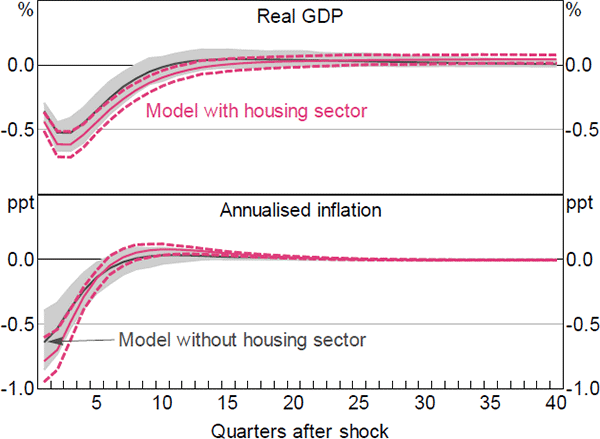RDP 2018-04: DSGE Reno: Adding a Housing Block to a Small Open Economy Model Appendix C: Transmission of Exchange Rate Shocks
April 2018
- Download the Paper 1,668KB
The aggregate effect of an unanticipated 10 per cent appreciation of the nominal exchange rate is shown in Figure C1. Our model predicts a slightly larger and more persistent decline in GDP compared to RSH. The fall in economic activity in both models is driven by a decrease in net exports as the appreciation makes exports less competitive abroad and imports more competitive domestically. Consistent with this, the falls in value added are larger in the more trade-exposed sectors: resource and tradeable (Figure C2). The exchange rate appreciation causes a decline in inflation that is slightly larger in magnitude compared to that in the RSH model. The decline largely reflects lower prices for imported goods.
In response to the fall in inflation and output, the central bank lowers the cash rate, which causes an increase in investment (Figure C2). The response of housing investment is quite large, peaking at around while 3 per cent, while the remaining sectors' investment are broadly unchanged. The difference reflects the greater sensitivity of housing investment to changes in the interest rate.

Note: 10 per cent appreciation of nominal exchange rate

Note: 10 per cent appreciation of nominal exchange rate